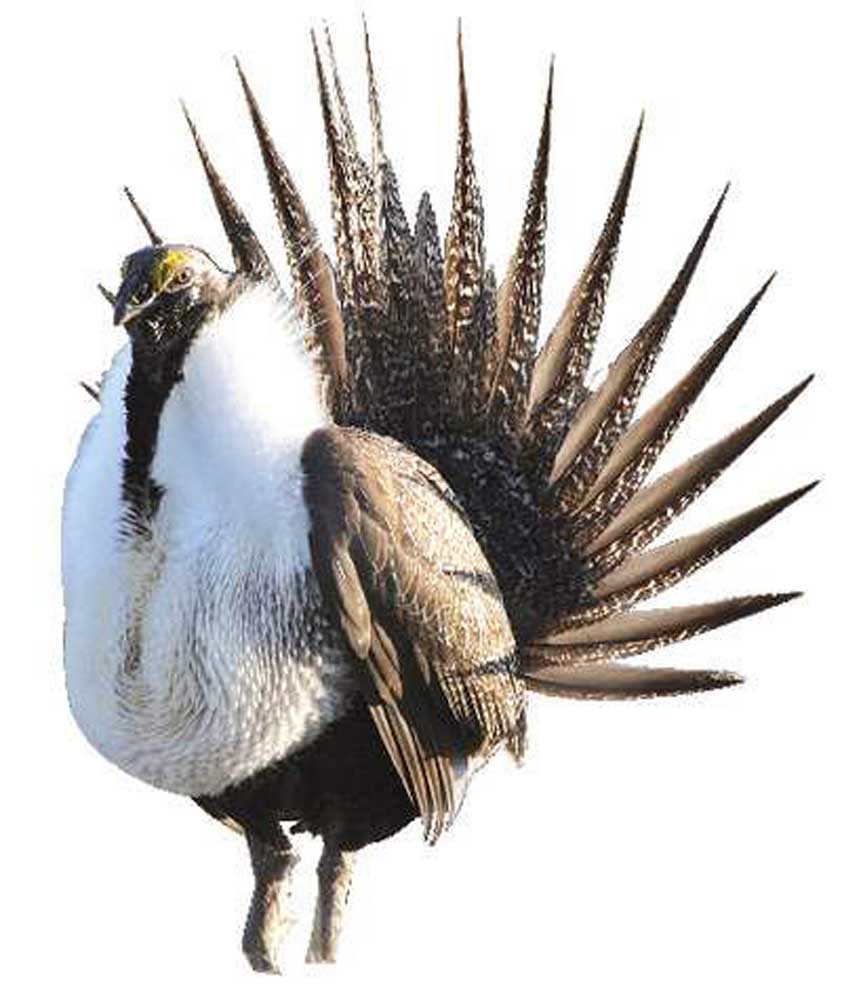Federal agency takes aim at wildfires in sagebrush habitat
Published 8:01 am Thursday, April 26, 2018
With the number of large wildfires on the rise in the sagebrush steppes scattered across Eastern Oregon and much of the mountain West, the Bureau of Land Management is looking at a multifaceted approach to cutting off the vicious cycle.
On Dec. 22, the agency provided public notice that it will prepare two concurrent environmental impact statements, looking at ways to reduce fuels for wildfires in sagebrush habitat, and analyzing the effects of building fuel breaks to better contain wildfires once they start. Officials from the agency said the proposal could go a long way toward protecting sagebrush and the approximately 350 animal species that depend on the habitat, including the much-ballyhooed greater sage grouse.
“What’s good for sage grouse is good for the other 349 species,” said Don Smurthwaite, communications director for the BLM.
Project leader Jonathan Beck said the two-pronged approach is designed to streamline fire management processes for districts of the BLM, providing a framework that could be applied to certain environmental reviews without requiring them to duplicate work.
“We want to do a lot of the upfront work,” Beck said Friday.
However, the project didn’t sit well with everyone. Dan Morse, conservation director for the Bend-based Oregon Natural Desert Association, said applying a one-size-fits-all approach could damage the environment and species it’s designed to help.
“The BLM is taking a hammer approach to what is a very delicate situation,” Morse said.
While the BLM’s project is in its infancy, Beck said conversations around wildfires in sagebrush, which encompasses a significant portion of the inland West, including parts of Central and Eastern Oregon, have been evolving for years. The BLM’s notice of intent notes that the number large wildfires has increased in recent years, and sagebrush territory has been among the most-impacted regions.
“In the last decade, fires have exceeded 100,000 acres on a regular basis, and the number of areas that burn again before habitat can establish has increased,” the notice reads.
While low-intensity fires are a part of life in sagebrush country, Smurthwaite said invasive plants, including cheatgrass, can fuel larger, more destructive wildfires. Morse added that cheatgrass often outcompetes native vegetation in areas where the soil has been disrupted by fire or effects from cars. The grass also tends to dry out more quickly than native plants, which can extend fire season in Central Oregon and beyond.
Morse added that sage grouse are particularly susceptible to impacts from wildfires. The sage grouse, a ground-dwelling bird known for its elaborate mating rituals, lives in sagebrush across 11 Western states, including Oregon. Population decline associated with loss of habitat led to sage grouse being considered for protection under the Endangered Species Act, though the U.S. Fish and Wildlife Service declined to list the species in 2015.
Dennis Teitzel, manager of the BLM’s Prineville district, said he welcomed the project. Teitzel said sagebrush comprises around 630,000 acres in the district, around one-third of the district’s total acreage, and protecting sage grouse habitat becomes a priority during fire season. The project would allow the district to streamline the public process for fuel breaks, fuels reduction, and rangeland restoration proposals.
Morse countered by saying that different portions of sagebrush habitat have different needs, even within Oregon. Given differences in plant species, precipitation and other factors, Morse said having individual public processes is valuable.
“I think the circumstances are individual,” Morse said.
Ideally, Morse said the agency would focus less on fire breaks, which he described as costly to maintain and potentially damaging to the environment, and more on changing grazing management practices and improving habitat resiliency.
Beck said the agency’s hope is to have the environmental impact statements prepared by the end of 2018. Comments on issues may be submitted in writing until Feb. 20, according to the notice of intent.
—Reporter: 541-617-7818, shamway@bendbulletin.com
“What’s good for sage grouse is good for the other 349 species.”— Don Smurthwaite, Bureau of Land Management









